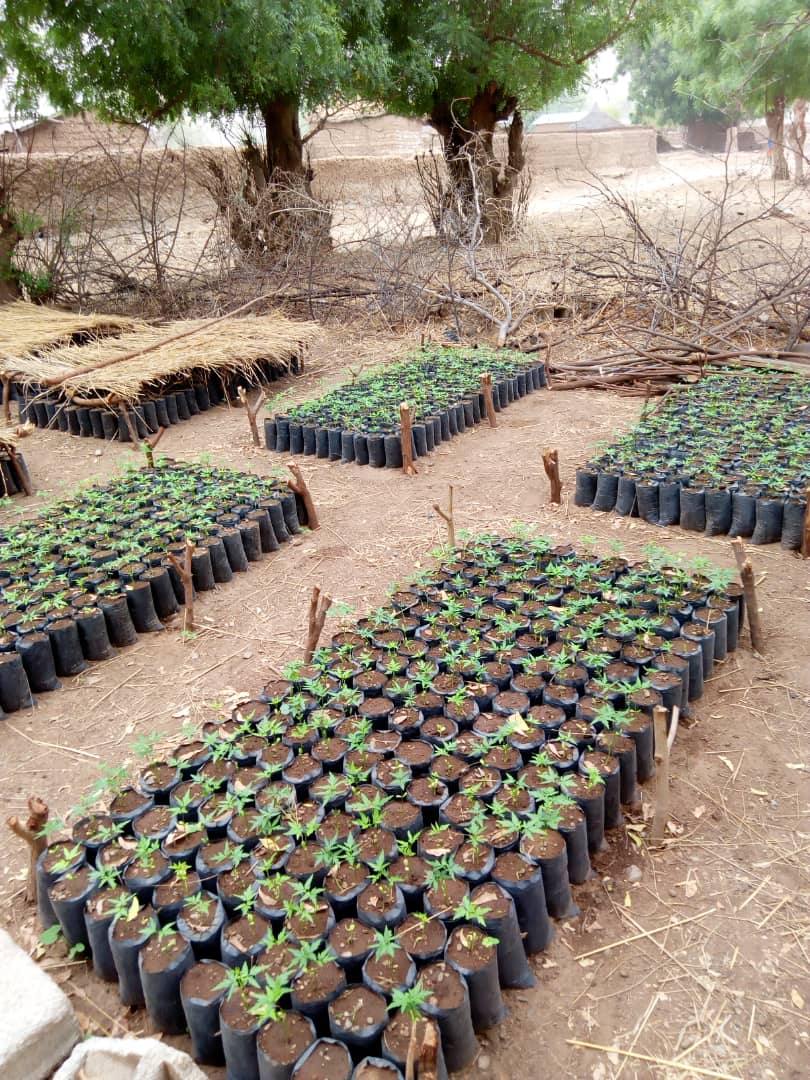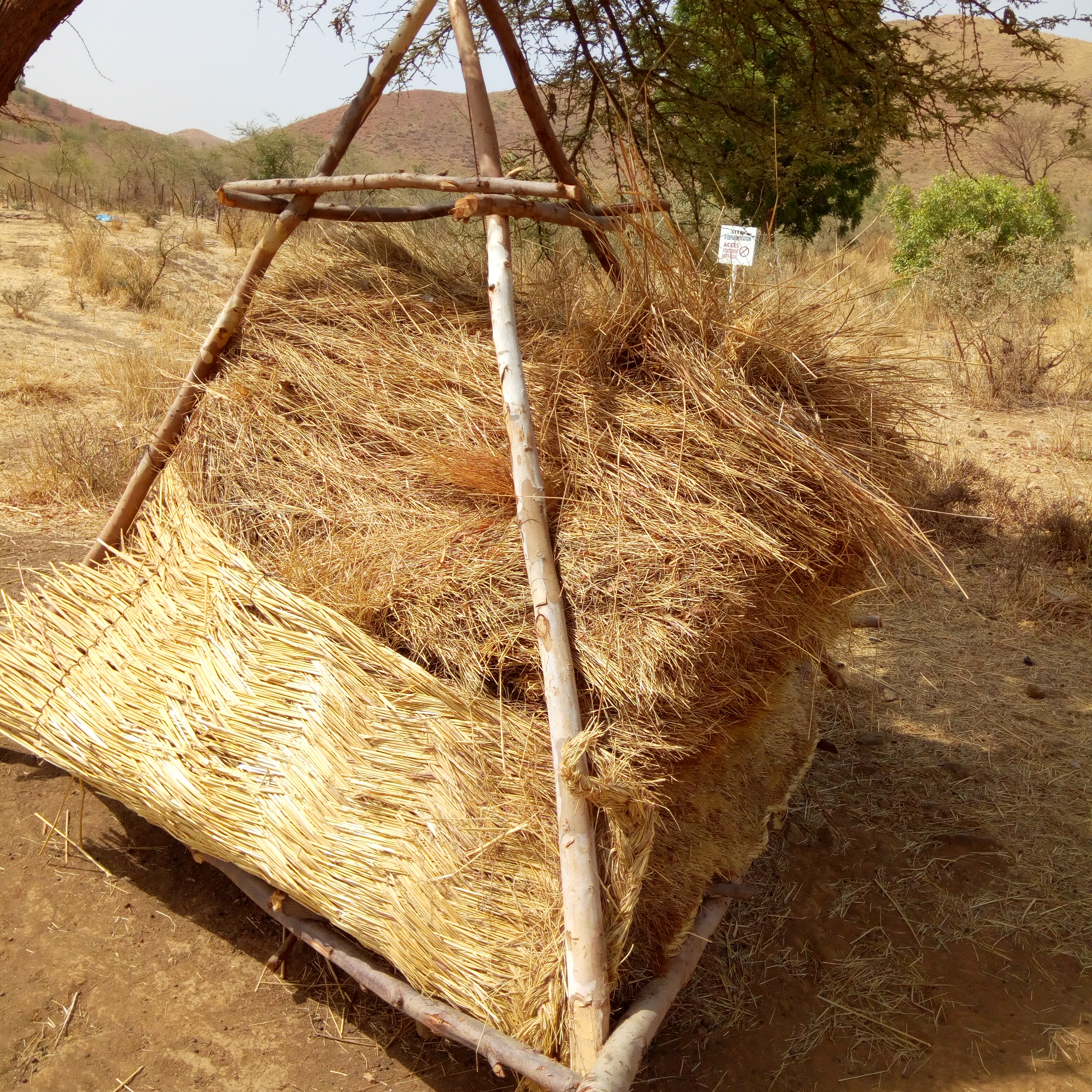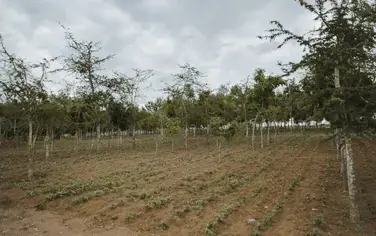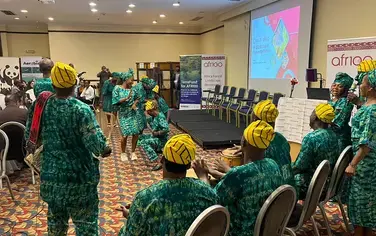GIZ’s Forest and Environment Programme (ProPFE) piloted several community-based reforestation projects across Cameroon’s Far North Region. Since 2017, they tested different soil rehabilitation and landscape restoration techniques in Mogazang, Laf and Moudine. These techniques can help to scale up forest and landscape restoration in a region threatened with soil degradation and desertification.
Laf is located in the Mayo-Kani; ‘Mayo’ means dry riverbed. What seems to be a vast empty trench during dry season turns into a torrential river as soon as the rains come. We visit Laf in the beginning of October, and by mere chance we don’t get wet. Instead, we wade through the mud to visit a few fields. The landowners, a group of smallholder famers, walk us around and explain how they restored the degraded soils. We arrive at a plot that used to be abandoned. "A hardé", hard and unproductive soils, as farmer Adaroung Tchamba explains.
We want to find out how subsistence agriculture can help to restore degraded landscapes. As we continue our walk, the straw yellow blossoms catch our eye, a species call crotalaria. It is not endemic, yet is very important flower. “It provides nitrogen to the main crops”, explains Adaroung. He also adopted intercropping and crop rotation, whereby he combines species such as Mucuna pruriens, Crotolaria spp, and Dolichos lablab (which provide nitrogen to the soil) with forage species such as Bracharia ruriziensis (which will be used to feed livestock), food crops (millet, maize, cowpea, rice), and cash crops such as cotton. In a small nursery nearby, the farmers grow their plants themselves.
Advanced composting techniques make the farmers independent from costly chemical fertilizers, and growing hedges (acacia nilotica) around their fields helps to prevent animals from penetrating the field. Cattle invasions, for instance, can devastate a field and cause conflicts between farmers and pastoralists. Besides, the biomass of the hedges serves as additional fertilizer for the field. "The results are incredible. Now, my neighbours want to use all these techniques as well," explains farmer Hamidou Diguir.

Scaling up community-based restoration
So far, Adaroung and his colleagues successfully restored 6.61 ha of abandoned fields in Laf and Maoudine. 50 km away in Mogazang, another 10 ha have been revitalized. Josephine Makueti from GIZ’s Forest and Environment Programme (ProPFE) supported the farmers with a series of theoretical and practical training. “This year, we are restoring almost 23 ha, which corresponds to the area of around 32 football pitches”, she explains.
What might sound negligible at first has the potential to be expand across the region. "These farmers have developed very useful, localised agroforestry techniques and tested them over years," says Malin Elsen. She is a forest landscape restoration expert at ProPFE and wants to scale up these approaches. Makueti and her colleagues systematised this local knowledge and now plan to spread the soil restoration models they compiled.
From Laf to Mogazang
We continue to Mogazang, a small community just outside the regional capital Maroua. Here, nearly 80% of the adults involved in restoration were women. Atem Efluetlancha is a junior advisor and works closely with the communities; he thinks that engaging women and young people is the key to successful landscape restoration. “You wouldn’t see any trees here if it wasn’t for the ladies”, he laughs.
Mogazang is a small valley lined with barren hills. The landscape consists of agricultural plots and severely degraded grazing areas. Over the years, the hills have been stripped of their vegetation. Rainwater and winds drain the soil from the slopes and silt up wathersheds and sources. In a first step, the community has started to reforest the hills to protect the watershed.

Livelihoods and mosaic restoration
“We want to go a step further and work towards mosaic restoration”, Efluetlancha adds. Especially in densly populated areas like Mogazang, diverse land use limits restoration options. Mosaic restoration is a holistic concept that integrates trees into fields and grazing areas. Thereby, trees and bushes become a productive part of the landscape and increase its productivity – like in Laf.
“In our nurseries, we grow popular and adapted local species such as balanites, vitellaria, moringa, azadirachta” says Vorom Dedeo, a farmer in Mogazang. The community also uses herbaceous biomass for the production and sale of fodder essential for feeding livestock during the dry season. "Depending on the season, we sell a bale of hay for up to 2000 FCFA – that’s how we make our living", says Vorom.
“Local livelihoods must be at the centre of all forest and landscape restoration projects”, Elsen affirms. She and her colleagues dedicated much of their time to capacity building and conducting needs assessments at the local level. Now, they plan to apply the techniques they developed in Laf and Maoudine in Mogazang and other landscape restoration projects across the region.
However, one obstacle prevails: Land tenure. In Mogazangm, as well as almost everywhere in Cameroon, land titles do not exist. The country’s recently adopted national forest landscape restoration strategy highlights the importance of land ownership, yet land disputes are usually resolved by traditional, religious and administrative authorities. As of now, customary law seems to be the only way to secure land ownership. Another reason for Makueti, Elsen and their colleagues to continue working with local communities and their leaders.




